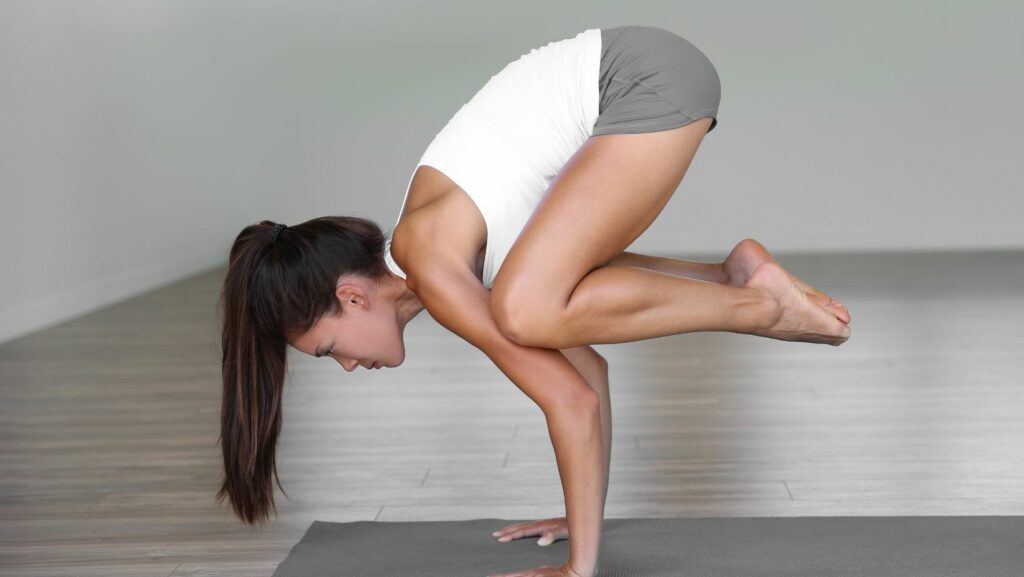
Vinyasa yoga is a style of yoga that emphasizes breath-synchronized movement. In other words, you move your body in time with your breath. This type of yoga is also sometimes called flow yoga, because of the continuous flow of movement.
What is Vinyasa Yoga
Vinyasa Yoga is a style of yoga that links breath and movement. In Sanskrit, nyasa means “to place,” and vi means “in a special way.” Consequently, vinyasa yoga means “to place in a special way.”
The movements in vinyasa yoga are smooth and continuous, flowing from one pose to the next. The breath is given focus, and each inhalation and exhalation is matched with a movement. For example, you might inhale as you raise your arms overhead, and exhale as you bend forward.

The speed of the breath should be constant, even if the movement is not. There should be no gaps in between inhalations and exhalations. This linking of breath and movement is what gives vinyasa yoga its fluidity and its name — vinyasa means “breath-synchronized movement.”
Vinyasa yoga is sometimes also called “flow” yoga, because of the continuous flow of movement that links the poses, as well as the flow of breath.
The History of Vinyasa Yoga
Vinyasa yoga is a type of yoga that emphasizes movement and breath. The word “vinyasa” means “to place in a special way,” and vinyasa yoga is often referred to as “flow” yoga because of the continuous flow of movement between poses.
Vinyasa yoga has its roots in Hatha yoga, which is the traditional form of yoga. Hatha yoga focuses on holding poses for a long period of time, and it was first developed in India in the 15th century. In the 20th century, Hatha yoga began to evolve into different styles, including Vinyasa yoga.
Vinyasa yoga was first developed in the west in the 1970s by two influential teachers: Krishnamacharya and Pattabhi Jois. Krishnamacharya is considered to be the father of modern yoga, and he developed Vinyasa yoga as a way to make Hatha yoga more accessible to people of all ages and abilities. Pattabhi Jois was one of Krishnamacharya’s students, and he founded the Ashtanga Yoga system, which is a type of Vinyasa yoga.
Today, Vinyasa Yoga is one of the most popular types of yoga practiced all over the world. It is often practiced in gyms and studios, and it can be tailored to fit any fitness level or experience level.
The Benefits of Vinyasa Yoga
Vinyasa yoga is a type of yoga that emphasizes flow – moving from one pose to the next in a fluid, continuous motion. The word “vinyasa” can be translated as “linking movement with breath.” In vinyasa yoga, each movement is coordinated with an inhale or exhale of the breath. This creates a moving meditation, which can be very calming and relaxing.
Vinyasa yoga is often referred to as “flow” yoga, because of the smooth way that the poses flow together. It is also sometimes called “power yoga,” because it can be more vigorous than other types of yoga. However, it is important to remember that vinyasa yoga is accessible to people of all levels – from beginners to experienced yogis.
There are many benefits to practicing vinyasa yoga, including increased flexibility, strength, and stamina; improved balance and coordination; increased concentration and focus; reduced stress and anxiety; and improved sleep quality. Vinyasa yoga can also help to improve your cardiovascular health and relieve chronic pain.
The Different Types of Vinyasa Yoga
Just like with any yoga class, the basic format of a vinyasa class is the same. You’ll start with some warm-ups, move through a flowing sequence of yoga poses, and then end with some relaxation.
But what makes vinyasa yoga different from other types of yoga, like hatha or iyengar? In a nutshell, it’s the flow.
In a vinyasa class, each movement is synchronized with breath. The breath becomes an important part of the practice, and helps to create a smooth, continuous flow from one pose to the next. This type of breathing also helps to heat up the body, which is why vinyasa classes are often referred to as “flow” classes.
There are endless possibilities when it comes to creating a flow sequence. That’s why you’ll find that no two vinyasa classes are exactly alike. Some classes may focus on building strength and others may be more restorative in nature. But they all have one thing in common: the linking of movement and breath to create a fluid practice.
How to Get Started with Vinyasa Yoga
Vinyasa yoga is a style of yoga that is based on a flowing, Strengthening, and energetic style of movement. The term “vinyasa” can be translated to mean “linking breath and movement.” In vinyasa yoga, each movement is connected with either an inhale or an exhale of the breath. This style of yoga is often referred to as “flow” yoga because of the smooth way that the movements are integrated with the breath.

Vinyasa yoga is a great choice for beginner yogis because it provides a sensory experience that can help you feel more comfortable and confident in your practice. The flowing movements can help to ease tension in the body and mind, and the focus on the breath can help to create a sense of calm and relaxation. If you’re new to vinyasa yoga, there are a few things that you should keep in mind as you get started with your practice.
The Key Poses of Vinyasa Yoga
Vinyasa yoga is a style of yoga that links breath and movement. The word “vinyasa” can be translated as “linking” or “connection.” In a vinyasa yoga class, the teacher will often cue the next pose on an inhale or an exhale, helping students to flow from one pose to the next.
Vinyasa is sometimes also referred to as flow yoga, because of the smooth way that the poses run together. It is a more active form of yoga than some of the others, and it can be strenuous at times.
If you are looking for a workout, vinyasa yoga may be a good choice for you. But even if you are not looking for a workout, vinyasa yoga can still give you many benefits, including improved flexibility and stress relief.
There are many different types of vinyasa yoga, but all classes will typically include some basic key poses. Here are four of the most common poses that you will find in a vinyasa yoga class:
Mountain Pose (Tadasana)
Mountain pose is often one of the first poses taught in a vinyasa class. It is a simple standing pose that helps to bring awareness to the breath and to the alignment of the body. From mountain pose, students will often flow into sun salutations (a series of poses that are usually done at the beginning of a vinyasa class).
Downward-Facing Dog Pose (Adho Mukha Svanasana)
One of the most well-known yoga poses, downward-facing dog is often included in sun salutations as well as in other parts of a vinyasa class. This pose helps to stretch and lengthen the spine, hips, hamstrings, calves, and shoulders.
Warrior I Pose (Virabhadrasana I)
Warrior I is a standing balancing pose that helps to build strength in the legs and open up the chest and hips. Warrior I can be challenging for beginners, but it is often worth sticking with it because it can help improve coordination and balance.
Camel Pose (Ustrasana)
Camel pose is a backbending posture that opens up the front body — chest, shoulders, and abdominal muscles — while also stretching the quads and increasing flexibility in the spine. This pose can be challenging for beginners because it requires strength and flexibility in equal measure.
Tips for Practicing Vinyasa Yoga
Vinyasa means “breath-synchronized movement,” and vinyasa yoga is a style of yoga that links breath and movement. As you move from one pose to the next, you breathe in and out at a steady pace. This type of yoga is also sometimes called flow yoga, because of the way that the poses flow together.
If you’re new to vinyasa yoga, there are a few things you can do to make sure you have a safe and enjoyable practice:
- Choose a class appropriate for your level. If you’re a beginner, look for classes labeled “all levels,” “beginner,” or “level 1.”
- Listen to your body and respect your limits. Yoga should never hurt. If something feels wrong or uncomfortable, stop doing it.
- Don’t compare yourself to other people in your class. Everyone is at a different stage in their practice, so just focus on your own experience.
- Take breaks when you need them. If you need to take a child’s pose or rest in savasana (corpse pose), do it!
Conclusion
Vinyasa yoga is a popular style of yoga that is dynamic and fluid, linking breath with movement. It is an excellent choice of yoga for beginners as it can help build strength and flexibility, while also aiding in stress reduction. If you are new to yoga, be sure to start with a basic class to get a feel for the poses and sequencing before moving on to a faster-paced vinyasa class.




